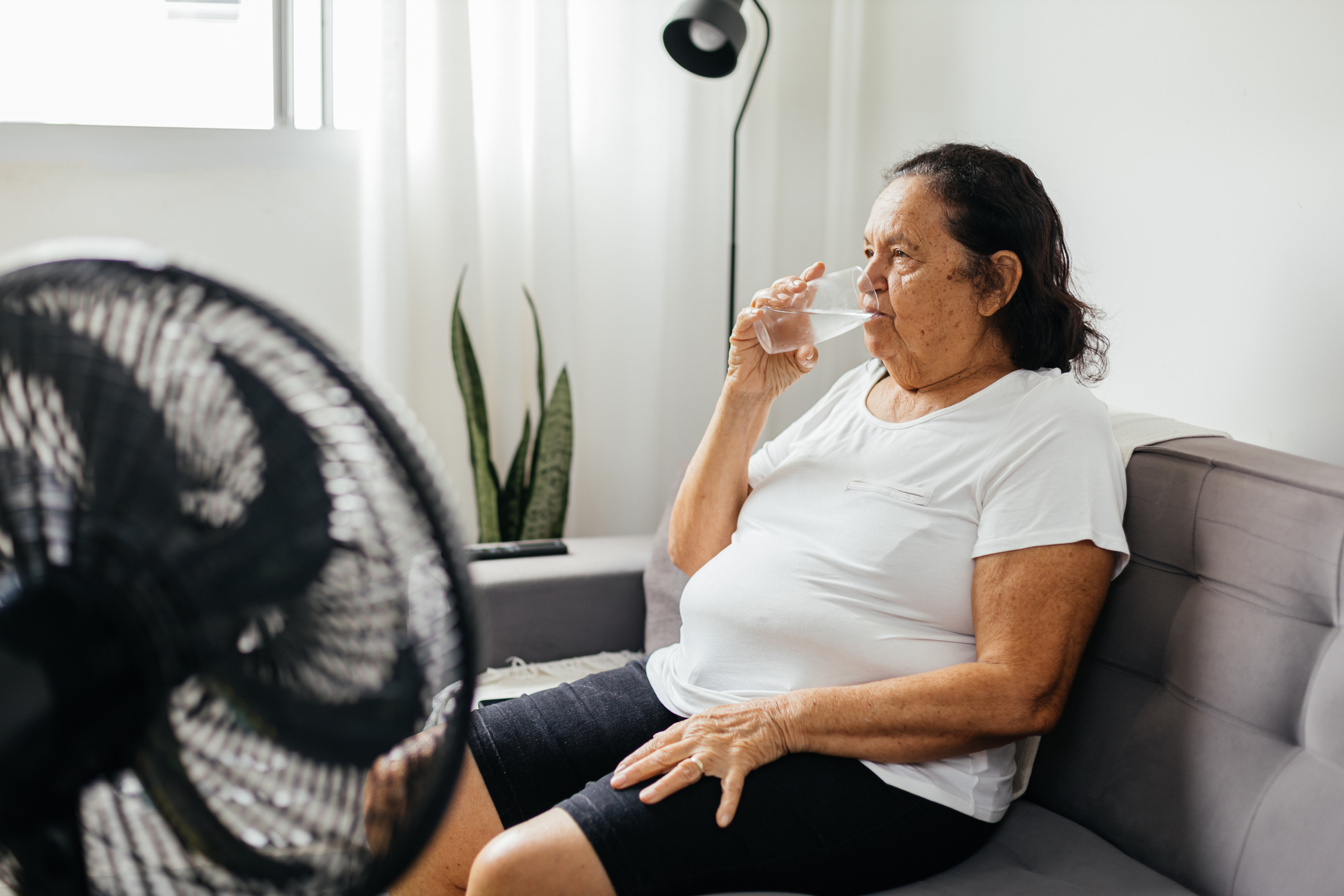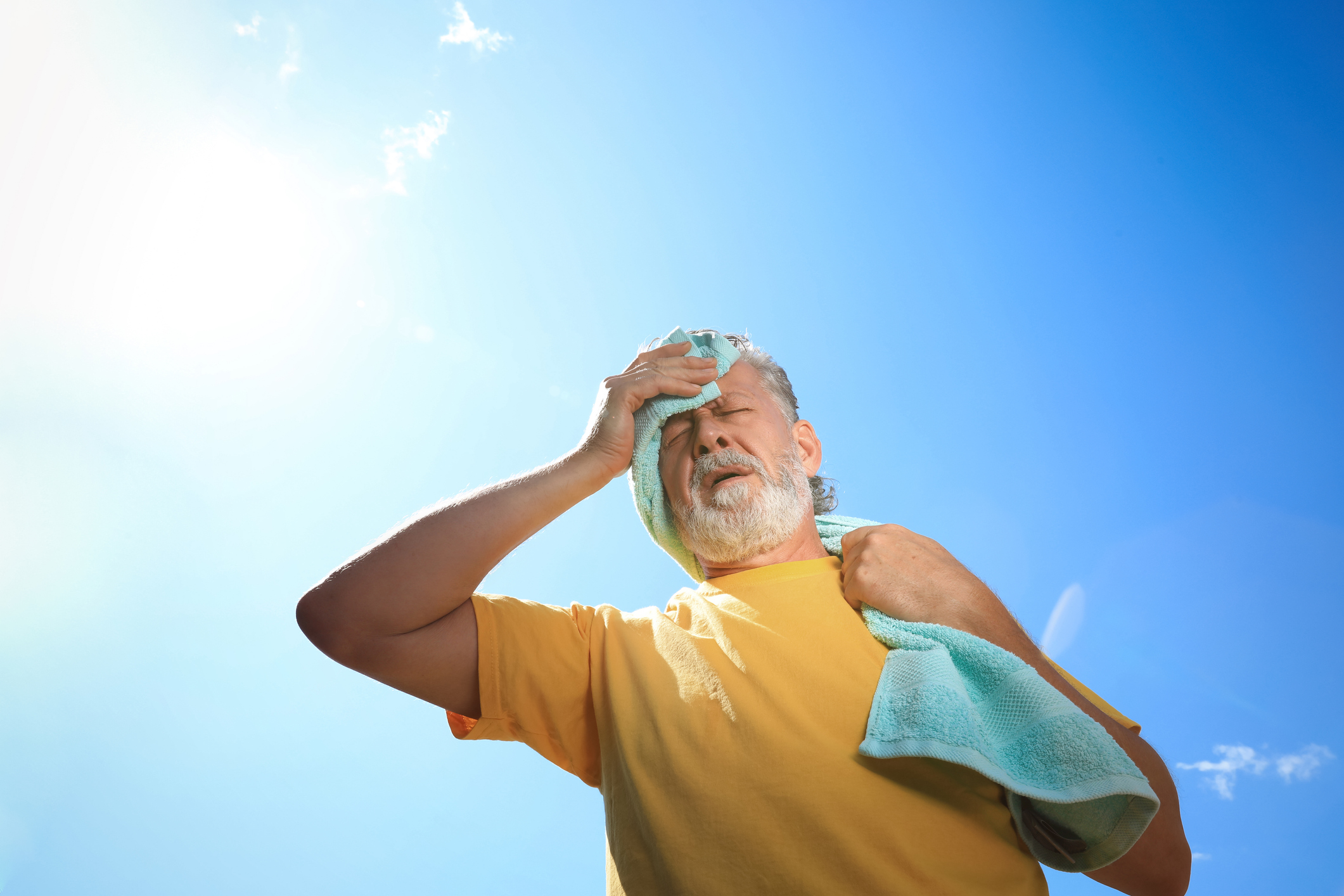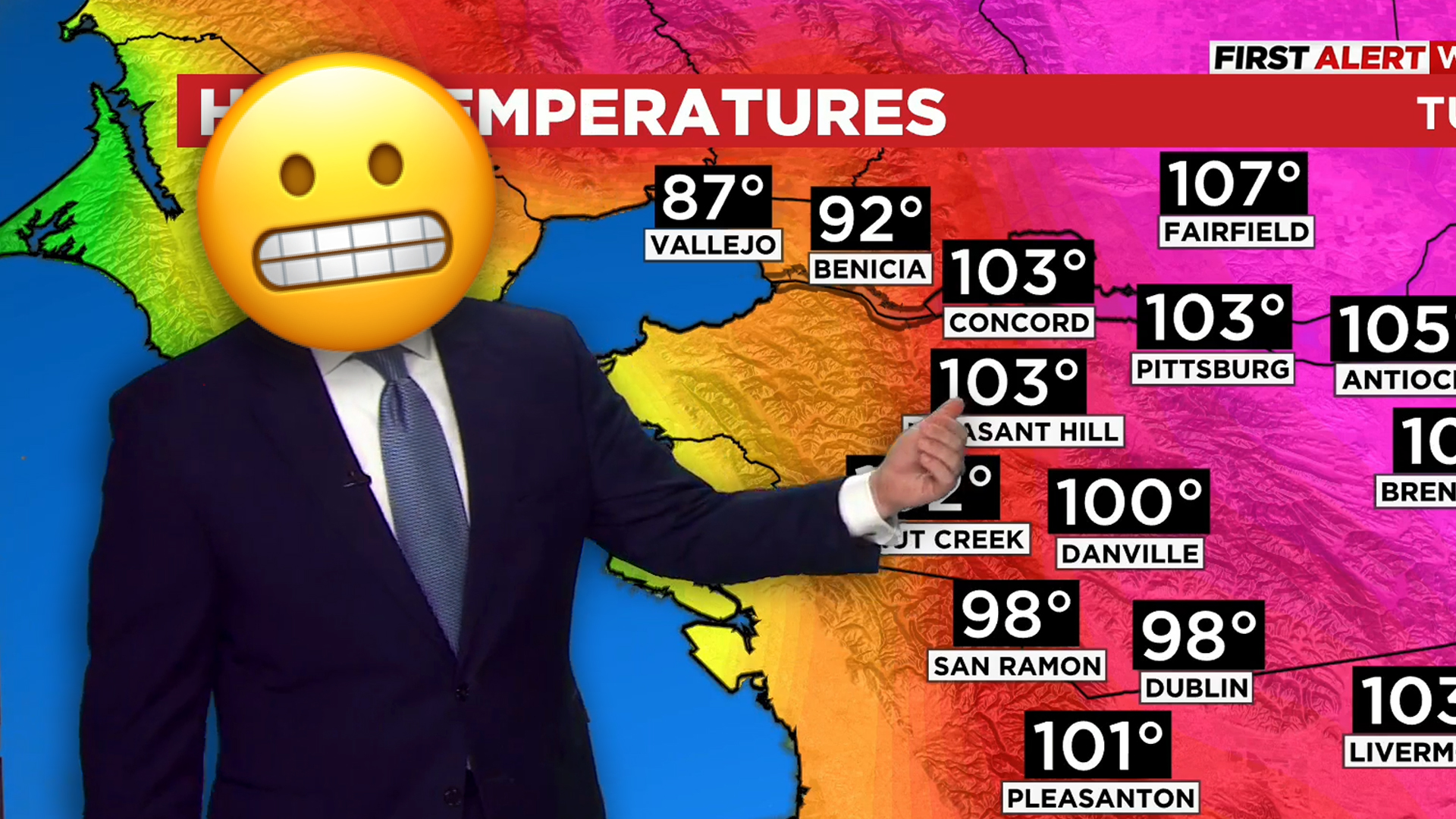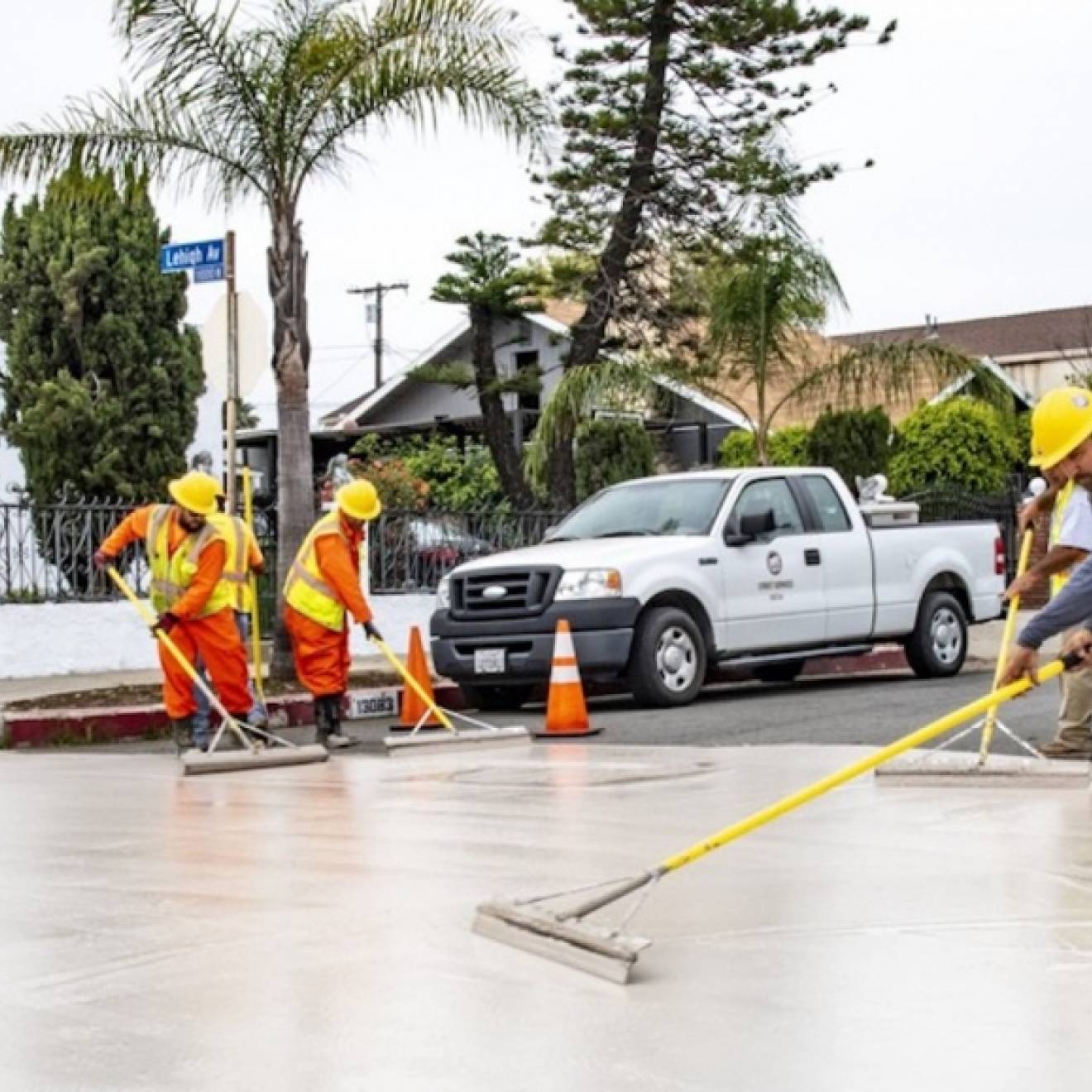Heat can be deadly.
As summer temperatures climb, heat illnesses become a more serious risk, particularly among young children, older adults, outdoor workers, athletes, the unhoused, and people who are pregnant or have chronic health conditions.
“On any day with extreme heat, emergency rooms in Los Angeles see an additional 1,500 patients,” said Dr. David Eisenman, a professor at the UCLA Fielding School of Public Health and co-leader of a research project to address extreme heat in Los Angeles.
“We estimate that an additional 16 people die on a single day of heat in Los Angeles County,” Eisenman said. “There are an extra 40 deaths a day by the fifth day of heat.”
In fact, more people die from extreme heat events than any other climate-related hazard, including hurricanes, floods, wildfires or blizzards.
The problem of extreme heat disproportionately affects people living in low-income areas, where housing is often poorly insulated, there is less access to air conditioning, and neighborhoods have fewer trees to provide shade.
With heat waves growing hotter and more frequent due to climate change, episodes of extreme heat are starting to be more widely recognized as a major public health risk. Los Angeles, for example, just hired its first chief heat officer to help coordinate the city’s emergency response to extreme heat.
When a heat wave strikes, one of the best ways to protect yourself, your family and your community is by learning to recognize the signs of heat exhaustion and heatstroke. It can literally save lives.
You should also take steps to avoid overheating: Stay hydrated, limit activity during the heat of the day, if possible, and check in on those who are most vulnerable.
Spotting the signs of heatstroke and heat exhaustion
Heat illnesses and injuries range from simple heat rash and sunburn to more serious conditions such as heat exhaustion and heatstroke, according to the U.S. Centers for Disease Control and Prevention.

Dr. David Eisenman
All call for cooling down the affected individual and getting them out of the sun. Heatstroke, however, can be deadly, said Dr. Mark Morocco, professor of emergency medicine at the David Geffen School of Medicine at UCLA and attending faculty at the Ronald Reagan UCLA Medical Center emergency department.
“That use of the term ‘stroke’ is because you should really think of it as a life-threatening heat illness,” Morocco said. “Heatstroke is an emergency, a very big emergency, the way a regular brain stroke is. That’s something where you need to immediately react and get your person to somebody who can help them. That means calling 911.”
Heatstroke is when the body’s core temperature exceeds 103 degrees. Such high temperatures “cook” the body at a cellular level, “so proteins stop working and basic body functions begin to break down,” Morocco said.

Dr. Mark Morocco
Symptoms of heatstroke
People experiencing heatstroke often begin acting strangely, like they are “drunk with heat,” Morocco said. A person who is dangerously overheating may:
-
Seem confused or agitated
-
Have trouble walking or talking
-
Experience nausea or dizziness
An individual experiencing these symptoms needs immediate cooling and emergency medical attention. Call 911, and while waiting for help to arrive:
-
Get the person out of the heat, into shade or an air-conditioned space.
-
Loosen or remove tight or constricting clothing.
-
Begin cooling the person down however you can. Apply cold, damp towels to their body or spritz them with cold water. If possible, point a fan at dampened skin to create evaporative cooling.
“The thing to remember is we want to reduce the core body temperature as quickly as possible, back down to what sounds like a relatively normal temperature range, where people are used to taking care of fevers,” Morocco said.
Heatstroke can affect anyone, whether they are exercising outdoors in the heat or not. While exercisers should take particular caution, even sitting in a hot apartment for several days can raise the body’s core temperature to potentially dangerous levels.
Symptoms of heat exhaustion generally appear before heatstroke sets in.
Symptoms of heat exhaustion

People experiencing heat exhaustion don’t exhibit the behavior associated with heatstroke, Morocco said, but they are likely to:
-
Appear overheated
-
Sweat profusely
-
Have a quick pulse
-
Feel tired or weak
-
Experience muscle cramps, nausea or vomiting
People who are experiencing these symptoms need to get out of the heat and into shade or an air-conditioned space, drink non-alcoholic fluids and rest.
People experiencing heat exhaustion will usually recognize they are overheating, Morocco said. However, those experiencing heatstroke may not, as the condition worsens with continued exposure to heat.
“People can be exposed to increasing levels of heat over a heat wave of a couple of days, or even a week, and slowly get worse and worse and worse,” he said. “It begins with, ‘It’s hot; I feel bad.’ And maybe they have other medical issues or challenges. And then, all of a sudden, they slip into this state where they’re not able to really recognize quite what’s going on with them.”
► To learn more, take UCLA’s Heatstroke Quiz
Take action to prevent serious illness
Stay out of the sun during the hottest times of the day, if possible. If you exercise outdoors, aim for early morning or late evening. When spending a day at the beach or the park, seek out a shady spot. Remind children to rest periodically and drink water.

And when a heat wave hits, look for cool places to be inside. If your home lacks air conditioning, consider heading to a public library or other air-conditioned space. Call your county public health department to ask for the location of cooling centers. Even a few hours in cooler temperatures will help your body stay cooler when you go back into the heat.
“The most important thing for folks to realize is that in hot weather, you’ve got to check on people who are at risk,” Morocco said. “That includes the elderly; it includes people who have lots of medical problems; it also includes infants and children.”
-
Seniors have a harder time regulating body temperature and may be taking medications that amplify the risk of heat exposure.
-
Babies and young children dehydrate more easily and are more vulnerable to high temperatures.
-
Pregnant women can overheat or become dehydrated more easily. Extreme heat also carries an increased risk of preterm birth.
-
People with chronic illness may be less likely to sense and respond to changes in temperature, and their medications can worsen the effects of extreme heat. Air pollution is often worse during heat waves, which can exacerbate asthma and other respiratory illnesses.
-
Overweight and obese individuals tend to retain more body heat and may be more prone to heat-related illnesses.
-
Outdoor workers are at risk from the lack of shade and increased body temperatures from their exertions. It’s vital that they get breaks, have ways to cool down, and remain hydrated.
-
Unhoused people are exposed to the elements constantly and may not have water, cooling centers or shade to help them lower their body temperatures.
More tips on staying safe in the heat from the CDC
Pay attention to the humidity: Hot temperatures coupled with humidity are particularly dangerous. If it’s too humid for sweat to easily evaporate, the human body struggles to cool itself down. Take extra care to avoid overheating when it’s hot and muggy out.
Stay inside, if you can: Seek out air-conditioned environments, if possible. If you don’t have air conditioning, check your county public health department for cooling centers, or go to a public library, the movies, or other air-conditioned environment(s).
Beware the electric fan: When temperatures reach the high 90s, electric fans will not prevent heat-related illness. Taking a cool shower or bath or moving to an air-conditioned place is a much better way to cool off.
Dress for the heat: Wear loose-fitting, light-colored, lightweight clothes.
Listen to your body: If exertion in the heat makes your heart pound and leaves you gasping for breath, stop all activity. Get into a cool area or into the shade, and rest, especially if you become lightheaded, confused, weak, or faint.
Wear sunscreen: Sunburn affects your body’s ability to cool down and can make you dehydrated. If you must go outdoors, protect yourself from the sun by wearing a wide-brimmed hat, sunglasses, and by putting on sunscreen of SPF 15 or higher 30 minutes prior to going out.
Drink plenty of fluids: Drink more fluids regardless of how active you are. Don’t wait until you’re thirsty to drink. And avoid alcoholic drinks or those that are high in sugar.
Replace salt and minerals: Heavy sweating removes salt and minerals from the body that need to be replaced. A sports drink can replace the salt and minerals you lose in sweat.
Never leave children or pets in cars: Cars can quickly heat up to dangerous temperatures, even with a window cracked open and when the outside temperatures are relatively mild.
Stay informed: Check the news for extreme heat alerts and safety tips and to learn about any cooling shelters in your area.
Top photo credit: iStock/Liudmila Chernetska


